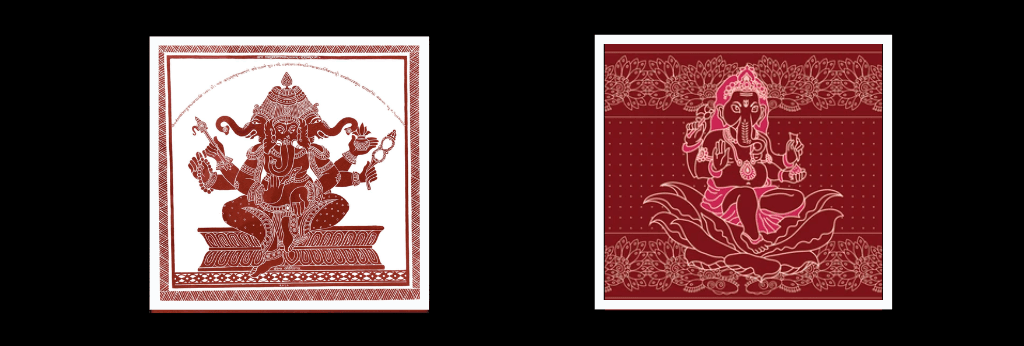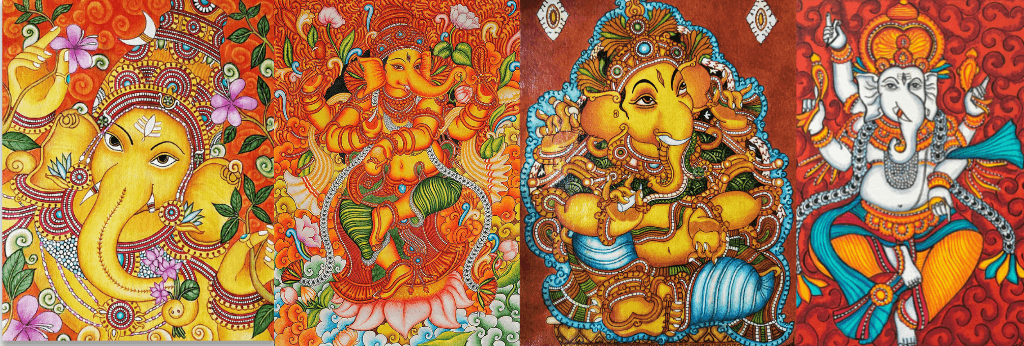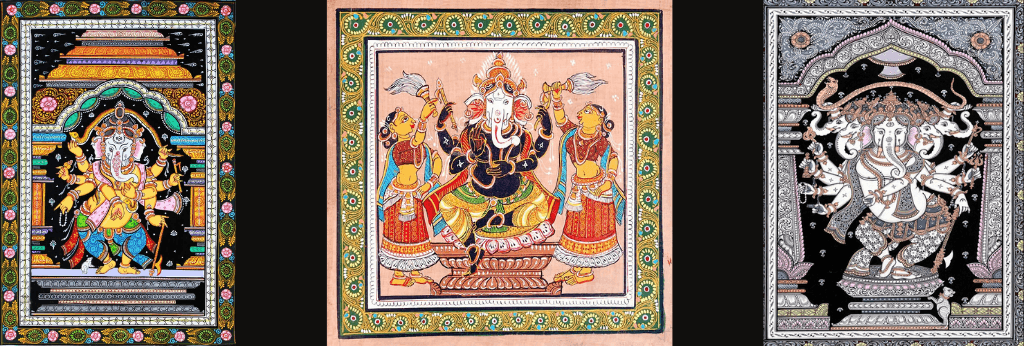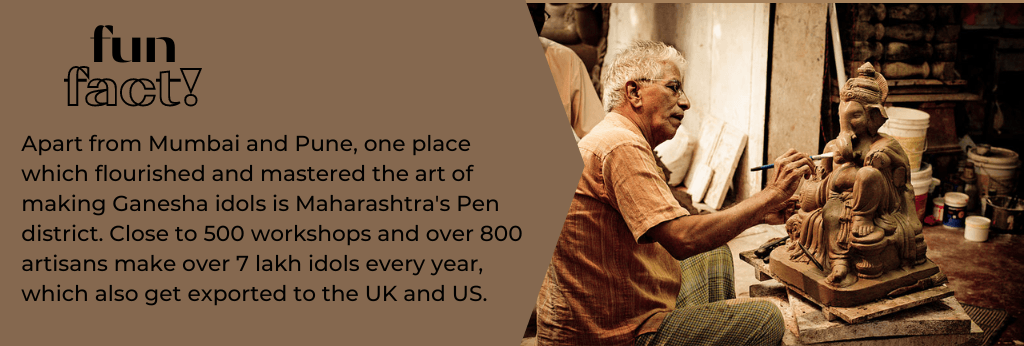
Your Cart
5 Ganpati Inspired Indian Art Forms

Did you hear the ringing? It's festive bells. Ganesh Chaturthi is around the corner, and we are eagerly waiting for our beloved Ganpati Bappa's arrival. Speaking about the Ganpati festival, do you ever noticed receiving or giving a lot of Ganpati paintings as housewarming gifts? Without a doubt, there is a significance behind it. Lord Ganesha is the epitome of every household's wisdom, luck, happiness, and sovereignty. However, there is an unexplored side of Ganesha paintings and Indian art. Hence Rooftop is here with some of the authentic Ganpati inspired Indian art forms.
Kaavi Art ---------

Since ancient times Ganpati influenced this artform: Kaavi art is definitely one of them. The USP of this artform is that it only consists of red and brown murals. They are embedded on the inner and outer walls of sacred places. Lime plaster is used as a base, and designs are made with Kaav, a mixture that contains red soil, charcoal, crushed leaves, flowers, and sap of vines. You can witness this Indian artform in most pre-Portuguese Goan temples, where you can also witness that region's old and glorious history.
Kerala Mural ------------

A traditional Kerala Mural painting combines creativity, excellence, and authenticity. There are few things in India holding their legacy, and these paintings are one of them. Subsequently, its invention in the 15th and 19th centuries, bright colour pallets and architectural elements dominate these paintings. All the elements in Mural paintings are extracted from natural materials like plants and minerals like pigment, brushes, and gums. Safron-red, green, white, red, blue, black, saffron-yellow, and golden-yellow, are some of the frequently used pigments in Kerala mural paintings. Ganesha's Mural paintings are a testament to the dedication, wisdom, and glorious Indian heritage.
Pattachitra -----------

The eternal connection between Indian Art and Ganpati is imperishable. Though Pattachitras is based on Krishna Leela, Bappa also had an integral contribution to these paintings. This traditional artform of Odissa channelises the essence of Indian Mythology through the warm pigments and natural colours. Fine cotton clothes are the traditional canvas for Pattachitra paintings. Later coated with gum and white powder. After it's dry, the artist finishes the masterpiece with natural mineral colours like charcoal black, chalk white, Indian yellow, red lead, and Indigo. This form of Indian art has few restrictions, like a mandatory floral border and bold, sharp lines.
Warli Painting --------------

Maharashtrian tribe invented Warli art, one of the major tribal art of India. The basic principles of Warli art paintings contain geometric shapes like circles, triangles, and squares. Experts believe that this art form is a modified version of cave paintings. The tales of contemporary Warli contain images of deities, hunting, wedding rituals, daily lives, and ancient civilizations. Though sometimes depict the essence of modern Indian art. In fact, many modern home decor brands and fashion houses have adored the uniqueness of warli art.
Tanjore Paintings -----------------

Ganesha Tanjore paintings are created by applying pigments and combining other ingredients on a cloth. To create an outline the first layer is applied on a white base. The painting is covered with pigment from which a design is made. Further, the pigment is applied to form the image, and finally, a second layer is added to make it bright. Finally, the artist can add a third layer of paint or gold foil for additional effect. The designs are printed on cotton cloth using stencils beforehand. Later transferred onto the canvas with oil sticks or brushes. Subsequently, they are cleaned up with turpentine or methylated spirit to remove any remaining paint residue.
Amongst the hype and buzz of modern and social media art, the core importance of Ganpati Inspired Indian art forms. Though the divine connection between Indian art and Ganpati doesn't come to everyone's notice. The aesthetics and the masterstrokes will always make that one piece different from the others. People hardly know Ganpati Inspired Indian art forms.

Still inquisitive about art? Join us on Instagram @rooftop_app for all the latest updates and download Rooftop app available for both iOS and Android devices.